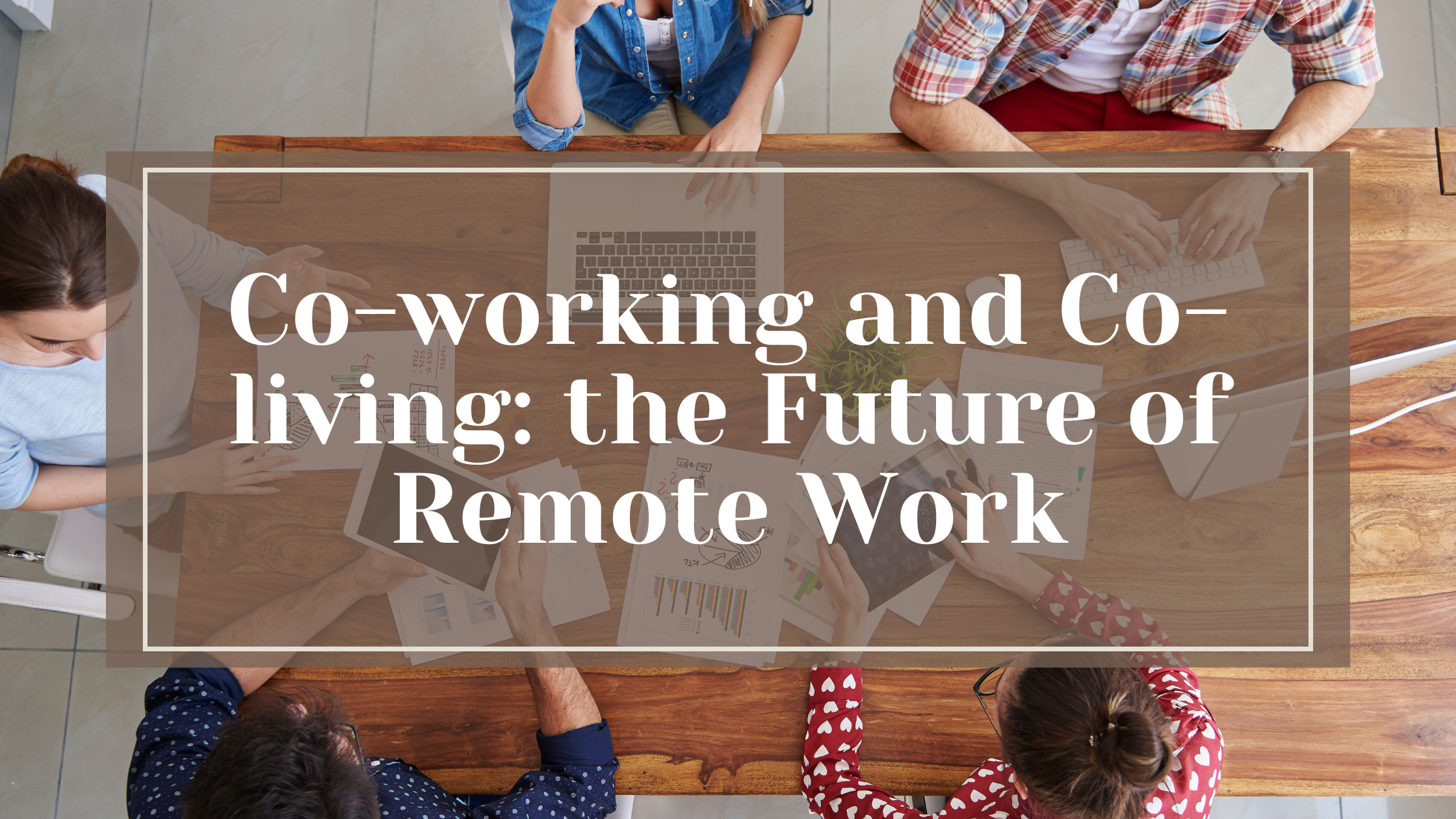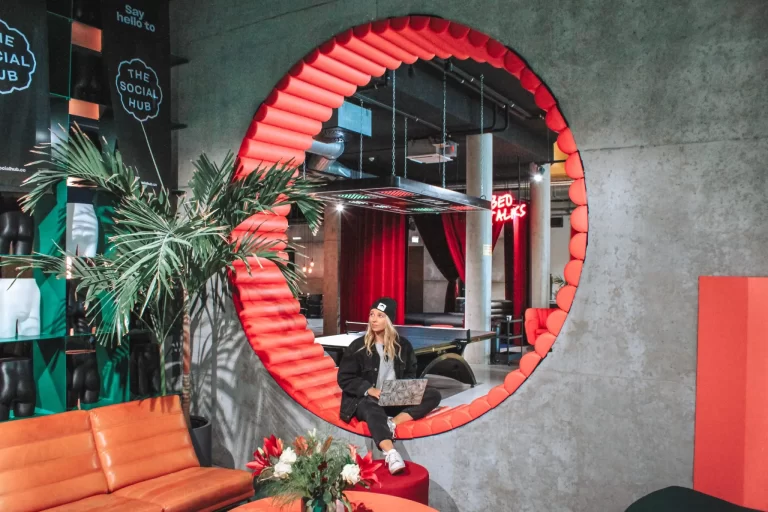Co-Working and Co-Living: The Future of Remote Work and New Lifestyle
Co-Working and Co-Living: The Future of Remote Work and New Lifestyle
The landscape of work and lifestyle has undergone a profound transformation in recent years, driven by the rise of co-working and co-living spaces. As remote work becomes increasingly common and traditional office environments evolve, co-working spaces have emerged as flexible and collaborative environments that cater to the needs of modern professionals. These spaces not only provide a productive work setting but also foster a sense of community and networking opportunities. Concurrently, co-living spaces have gained popularity as affordable and socially engaging housing solutions, offering shared amenities and communal living experiences that resonate with the growing desire for connectivity and convenience. Together, co-working and co-living represent a new paradigm in how people work and live, blending flexibility, community, and efficiency to meet the demands of a dynamic and interconnected world.
The Intersection of Co-Working and Co-Living
Popular Destinations for Co-Working and Co-Living
Choosing the Right Co-Working or Co-Living Space
In a Rush? Pin it to Read Later!
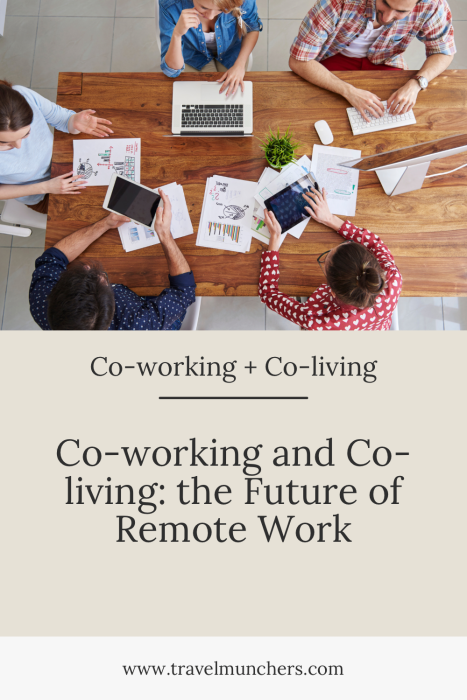
Copyright Notice: All material on this travel blog site is the sole property of Travel Munchers. This includes blog posts, pages, design and all photos (whether watermarked or not). Any use of materials from this site without express written consent will be considered copyright infringement.
Disclaimer: Some items contain affiliate links and I will get a small commission at no additional cost to you. I really appreciate your support if you like my recommendations!
What is Co-Working?
Co-working is a modern work arrangement where individuals from various professional backgrounds share a communal workspace. Unlike traditional office settings, co-working spaces are designed to be flexible and collaborative, providing a range of amenities such as high-speed internet, meeting rooms, and ergonomic furniture. These spaces cater to freelancers, entrepreneurs, remote workers, and small businesses by offering a productive work environment without the need for long-term leases or significant overhead costs. Co-working fosters a sense of community and networking opportunities, as individuals work alongside others in a shared setting, often benefiting from spontaneous interactions and collaborative projects.
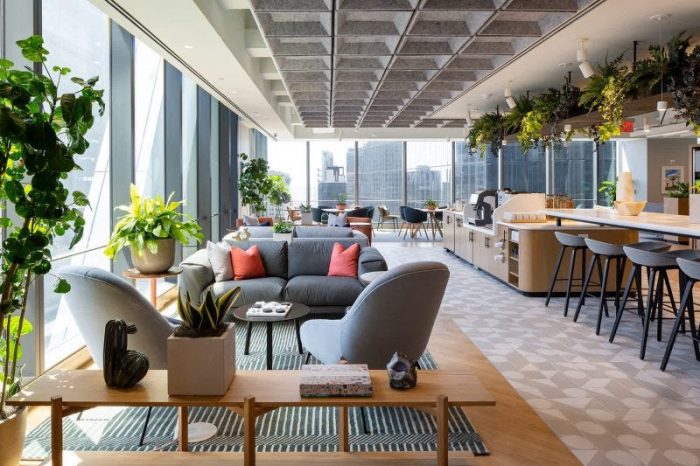
Key features and amenities typically offered
Flexible Workspace Options:
Hot Desks: Non-reserved, first-come-first-served desks for individuals.
Dedicated Desks: Assigned desks for individuals who require a stable workspace.
Private Offices: Enclosed spaces for teams or individuals seeking privacy.
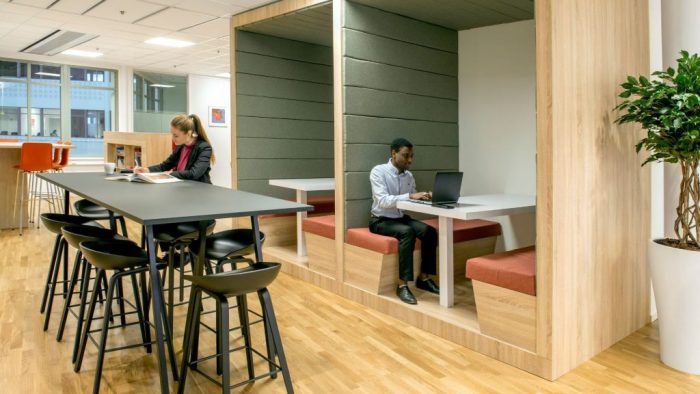
High-Speed Internet:
Reliable Connectivity: Fast and stable internet access to support various digital tasks and communication needs.
Meeting Rooms:
Bookable Spaces: Rooms equipped with presentation tools, whiteboards, and video conferencing facilities for meetings and collaborative work.
Common Areas:
Lounge Areas: Comfortable seating and relaxation zones for informal meetings and breaks.
Kitchen Facilities: Kitchenettes or coffee bars stocked with beverages and snacks.
Printing and Office Supplies:
Print Services: Access to printers, scanners, and copiers.
Office Supplies: Availability of essential supplies such as pens, paper, and notepads.
Security and Privacy:
Access Control: Secure entry systems, such as key cards or biometric access, to ensure safety.
Private Lockers: Secure storage for personal items and valuables.
Professional Support Services:
- Reception Services: Front desk support for handling mail, packages, and visitor inquiries.
- Administrative Assistance: Access to administrative support and concierge services.
Ergonomic Furniture:
- Comfortable Workstations: Adjustable desks, ergonomic chairs, and well-designed workstations to enhance comfort and productivity.

Benefits of Co-Working
Flexibility and cost-efficiency:
24/7 Access or Extended Hours: Availability of the workspace around the clock for members who need flexible working hours. However, you only pay for what you need.
Networking opportunities and community engagement:
Workshops and Seminars: Regular events and networking opportunities to foster professional growth and community engagement.
Social Gatherings: Informal events to encourage interaction among members.

Enhanced productivity:
Distraction-Free Environment: Co-working spaces are designed to minimize distractions often found in home environments or traditional offices. With a dedicated workspace and a professional setting, individuals can focus better on their tasks.
Structured Work Hours: Many co-working spaces provide regular business hours or even 24/7 access, helping individuals establish a routine and maintain consistent work hours. This structure can improve time management and productivity.
Access to Resources: The availability of high-speed internet, modern office equipment, and meeting rooms ensures that professionals have the tools they need to work efficiently. Quick access to these resources reduces downtime and supports smooth workflow.
Collaborative Atmosphere: Working alongside other professionals can foster creativity and motivation. The opportunity for spontaneous brainstorming and collaborative projects can enhance problem-solving and innovation.
Professional Setting: The ambiance of a co-working space, often designed with productivity in mind, can help individuals maintain a work-focused mindset, leading to higher output and better performance.
Work-life balance:
Reduced Commute Time: Many co-working spaces are strategically located in urban areas, reducing commute times for those who might otherwise face long, stressful journeys. Shorter commutes contribute to less stress and more time for personal activities.
Work-Life Integration: The communal and often social nature of co-working spaces helps to blur the lines between work and leisure, creating a more balanced and integrated approach to professional and personal life.
Health and Well-being: Many co-working spaces emphasize well-being by offering ergonomic furniture, on-site fitness facilities, or wellness programs. A comfortable and healthy work environment can lead to improved overall well-being and a better work-life balance.
What is Co-Living?
Co-living is a modern housing arrangement where individuals or groups share a living space and its associated amenities, creating a community-oriented lifestyle. This concept combines private living areas with communal facilities to foster a sense of belonging and shared responsibility among residents.
Key features and amenities typically offered
Shared Spaces:
Co-living spaces typically feature shared common areas such as kitchens, living rooms, and sometimes even bathrooms. These communal areas are designed to encourage social interaction and collaboration among residents.
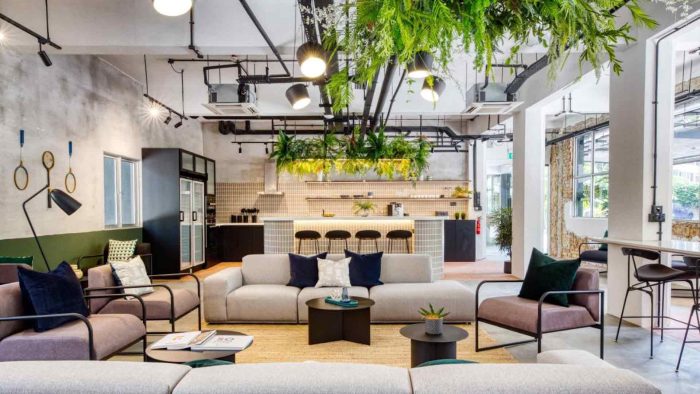
Private Accommodations:
While communal areas are shared, residents usually have their own private bedrooms or apartments. These private spaces are often furnished and designed to provide personal comfort and privacy.
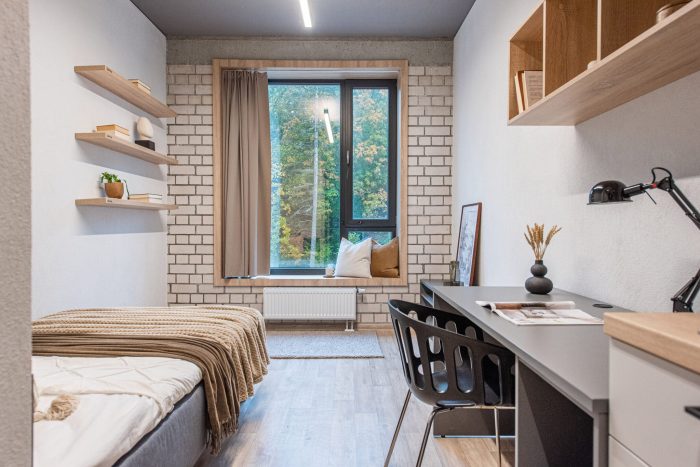
Community and Social Interaction:
Co-living emphasizes building a sense of community. Residents often participate in organized social events, workshops, or communal activities, which help create a supportive and engaging environment.
Flexible Leases:
Many co-living arrangements offer flexible lease terms, allowing residents to rent spaces for shorter durations compared to traditional long-term leases. This flexibility is ideal for digital nomads, professionals on temporary assignments, or individuals seeking a temporary living solution.
Amenities and Services:
Co-living spaces often come with various amenities such as high-speed internet, cleaning services, utilities, and sometimes even wellness facilities like gyms or yoga studios. These amenities are included in the rental cost, simplifying budgeting and reducing the hassle of managing multiple service providers.
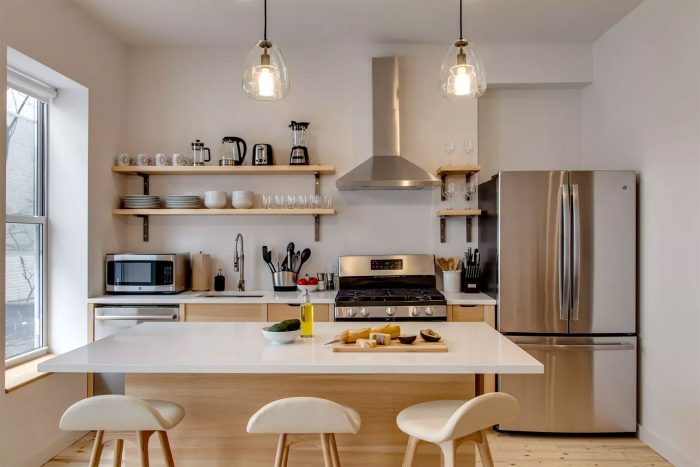
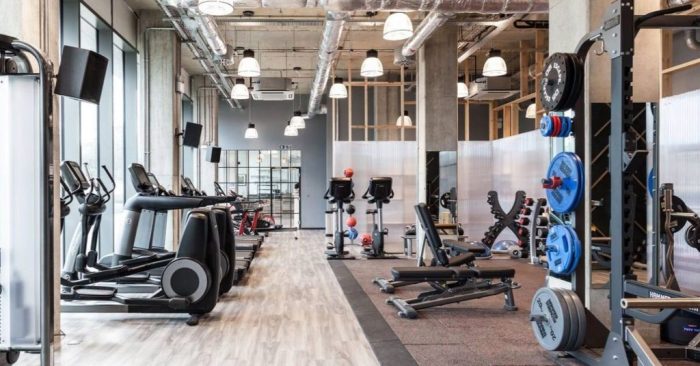
Cost-Effective Living:
By sharing living expenses and communal facilities, co-living can be a more affordable option compared to renting a private apartment. This cost-sharing aspect makes it accessible to a wider range of people.
Diverse Communities:
Co-living spaces often attract a diverse mix of individuals, including young professionals, students, and expatriates. This diversity enriches the living experience and can lead to valuable networking opportunities and cultural exchanges.
Benefits of Co-Living
Affordability and cost-sharing:
Reduced Living Costs: By sharing living spaces and amenities, co-living arrangements allow individuals to split the costs of rent, utilities, and other expenses. This cost-sharing makes living in desirable urban areas more affordable than traditional renting options.
Inclusive Pricing: Many co-living spaces offer all-inclusive pricing that covers utilities, internet, and sometimes even cleaning services. This simplifies budgeting and avoids unexpected expenses, making financial planning more straightforward.
Economies of Scale: Shared resources such as appliances, furnishings, and communal areas help to reduce individual expenditures. This collective use of resources lowers overall costs and enhances affordability.
Community and social interaction:
Fostering Connections: Co-living spaces are designed to encourage interaction among residents through shared common areas and organized events. This communal environment helps individuals build meaningful relationships and integrate into a social network.
Cultural Exchange: With a diverse mix of residents, co-living provides opportunities for cultural exchange and learning. Engaging with people from different backgrounds can enrich personal experiences and broaden perspectives.
Supportive Environment: The sense of community in co-living spaces often translates into emotional and social support. Residents can find companionship and support in a setting that fosters collaboration and mutual assistance.

Convenience and modern living arrangements:
Turnkey Living Solutions: Many co-living spaces offer fully furnished accommodations with modern amenities. This setup allows residents to move in with minimal hassle, as essential items and utilities are already provided.
Flexible Lease Terms: Co-living arrangements often come with flexible leasing options, making them suitable for individuals with varying needs. Whether for short-term stays or longer commitments, residents can find a lease term that fits their lifestyle.
Strategic Locations: Co-living spaces are frequently located in central urban areas with easy access to public transportation, shopping, and business hubs. This prime positioning enhances convenience and reduces commute times.
Innovative Design: Modern co-living environments are designed with contemporary aesthetics and functionality in mind. Features such as ergonomic furniture, smart home technology, and well-planned communal spaces contribute to a comfortable and efficient living experience.
The Intersection of Co-Working and Co-Living
How co-working spaces complement co-living arrangements.
Co-working spaces and co-living arrangements complement each other in several meaningful ways, creating a cohesive lifestyle solution for modern professionals and digital nomads. Here’s how these two concepts work together seamlessly.
Co-living spaces often feature co-working areas or nearby co-working facilities, allowing residents to seamlessly transition between their home and work environments. This integration minimizes commute time and enhances productivity by providing easy access to workspace.
Popular Destinations for Co-Working and Co-Living
Global Hotspots
As the demand for flexible work and living arrangements grows, several cities and regions worldwide have become prominent hubs for co-working and co-living spaces. These areas offer vibrant communities and modern amenities that cater to the needs of digital nomads, remote workers, and entrepreneurs. Here’s an overview of some key locations:
Berlin, Germany
Co-Working: Berlin is renowned for its thriving co-working scene, with numerous spaces like Factory Berlin, WeWork, and Betahaus. The city’s co-working spaces are celebrated for their innovative design, networking opportunities, and collaborative environments.
Co-Living: Berlin’s co-living options, such as Quarters and The Circus Apartments, offer a mix of private and communal living spaces. These arrangements emphasize community-building and cultural integration, making Berlin a hub for young professionals and creatives.
Bali, Indonesia
Co-Working: Bali has emerged as a top destination for digital nomads, with popular co-working spaces like Dojo Bali, Hubud, and Tropical Nomad. These spaces are known for their relaxed atmosphere, strong community ties, and beautiful tropical settings.
Co-Living: Bali also boasts several co-living communities, such as Outpost and Roam Bali, which combine stylish accommodation with co-working facilities. These co-living options provide a seamless blend of work and leisure in a serene environment.
New York City, USA
Co-Working: New York City is a global leader in the co-working industry, featuring prominent spaces like WeWork, Regus, and Spaces. The city’s co-working hubs are known for their high-energy environments, extensive networking opportunities, and strategic locations.
Co-Living: Co-living options in NYC, such as The Collective and Common, offer modern living solutions with shared amenities and community events. These spaces cater to young professionals seeking affordable and social living arrangements in a bustling metropolis.
London, UK
Co-Working: London’s co-working landscape includes well-known spaces like The Office Group, WeWork, and Mindspace. These hubs are favored for their premium locations, diverse amenities, and dynamic work environments.
Co-Living: Co-living in London is represented by companies like The Collective and WeLive. These spaces offer stylish apartments with shared facilities, focusing on creating vibrant communities in one of the world’s most iconic cities.
Singapore
Co-Working: Singapore hosts prominent co-working spaces such as The Work Project, WeWork, and Regus, known for their sleek designs and strategic locations. These spaces provide excellent networking opportunities and support Singapore’s status as a global business hub.
Co-Living: Co-living in Singapore includes options like Hmlet and The Hive, which provide flexible living arrangements with modern amenities and community-building activities. These spaces cater to expatriates and professionals in the city-state.
Barcelona, Spain
Co-Working: Barcelona’s co-working scene features innovative spaces like MooSpaces, WeWork, and Coworking Cava. These hubs offer a blend of creativity and productivity, attracting entrepreneurs and freelancers from around the world.
Co-Living: Co-living in Barcelona includes options such as Kawasemi and Cohabs, which offer stylish communal living with a focus on social interaction and cultural experiences in a vibrant European city.
Choosing the Right Co-Working or Co-Living Space: Factors to consider
Location:
Proximity to Work and Leisure: Choose a location that is convenient for both your professional and personal activities. For co-working spaces, this means being close to your primary work areas, meetings, or clients. For co-living, consider the proximity to essential amenities, such as grocery stores, public transportation, and recreational areas.
Neighborhood Vibe: The surrounding neighborhood should align with your lifestyle preferences. Whether you prefer a bustling urban area, a serene suburban setting, or a vibrant cultural district, the local environment can significantly impact your overall experience.
Accessibility: Ensure that the location is easily accessible via public transport or major roads. Good connectivity enhances convenience and can reduce daily commuting time.
Amenities:
Co-Working Amenities:
- Office Equipment: Look for spaces that offer essential office equipment like high-speed internet, printers, and meeting rooms. Some co-working spaces also provide additional resources like tech support and dedicated phone lines.
- Comfort and Facilities: Amenities such as comfortable workstations, ergonomic chairs, and soundproof meeting rooms can enhance productivity. Consider spaces that offer extras like coffee bars, lounges, and event spaces.
- Health and Wellness: Some co-working spaces include wellness amenities such as gyms, yoga studios, or relaxation areas, contributing to a balanced work-life environment.
Co-Living Amenities:
- Furnishings and Utilities: Ensure that the living space is well-furnished and includes utilities such as electricity, water, and internet. Many co-living arrangements also provide services like cleaning and maintenance.
- Shared Facilities: Check for communal areas like kitchens, laundry facilities, and recreational spaces. These amenities foster a sense of community and provide convenience.
- Safety and Security: Consider the security features of the co-living space, including secure entry systems, on-site staff, and safety protocols.
Community Aspects:
Culture and Vibe: Assess the community culture within both co-working and co-living spaces. Look for environments that align with your values and work style. For example, some spaces may focus on collaborative projects, while others might cater to independent work.
Social and Networking Opportunities: Evaluate the opportunities for social interaction and professional networking. Co-working spaces often host events, workshops, and networking mixers, while co-living spaces might organize communal activities and social gatherings.
Compatibility: Ensure that the community is compatible with your personal preferences and lifestyle. Whether you’re looking for a quiet space to focus or a lively environment for collaboration, the community dynamics should suit your needs.
Budget and Contract Terms:
Affordability: Compare costs across different options to find a space that fits your budget. Consider both co-working and co-living costs, including any additional fees for amenities or services.
Pricing Structure: Understand the pricing model, whether it’s a monthly fee, a pay-as-you-go arrangement, or a membership model. Be aware of any hidden costs or additional charges.
Contract Flexibility: Review the contract terms for both co-working and co-living spaces. Look for flexibility in lease terms, such as the length of commitment, options for early termination, and any penalties for breaking the lease.
Additional Costs: Consider potential extra costs such as security deposits, administrative fees, or charges for additional services. Ensure that all costs are transparent and clearly outlined in the contract.
Challenges and Considerations: Common Issues
Privacy concerns and noise levels:
Privacy concerns and noise levels are significant considerations when choosing co-working and co-living spaces. In co-working environments, the open-plan layout can lead to distractions and compromise privacy, especially in busy or crowded areas.
Sharing a workspace with others often means dealing with background noise, which can affect concentration and productivity. To mitigate this, many co-working spaces offer private meeting rooms, phone booths, and quiet zones for focused work.
Similarly, in co-living spaces, shared living areas can pose privacy challenges, and noise from communal spaces might disrupt relaxation or sleep. Opting for co-living arrangements with private rooms and soundproofing can help address these issues, ensuring a more comfortable and productive experience.
Managing personal space and communal living:
Managing personal space in co-working and co-living environments requires a balance of respecting communal areas while maintaining boundaries for privacy and comfort. In co-working spaces, this often means selecting a designated desk or workspace that allows for personal organization, while being mindful of shared amenities like meeting rooms and lounges.
Clear communication and etiquette are key in navigating shared environments, ensuring that everyone can work productively without intruding on each other’s space.
Similarly, in co-living arrangements, it’s important to establish ground rules for shared areas such as kitchens, living rooms, and bathrooms, while also carving out personal retreats in private bedrooms or designated quiet areas. Successfully managing personal space in these settings fosters a harmonious atmosphere and a positive community experience.
Need More Travel Tips?
💳 WANT TO TRAVEL FOR FREE?
Want to travel for free, simply as a reward for spending money you already had to spend ? I love my Capital One travel card and I think you will too! You get unlimited miles on every purchase with a card that fits your lifestyle. Plus 10x points on hotels and 5x points on flights booked through their travel portal!!! If you ever wanted to travel in luxury, this is the card for you. Check out our referral link!
🧳 NEED TRAVEL INSURANCE?
Peace of mind comes when you book travel insurance. You do not need to worry about flight cancelations, lost luggage, or any illnesses while traveling. Check out the first ever specific Digital Nomad insurance we use here : SafetyWing. ETKA, Vistors Coverage , or Insubuy.
NEED AN eSIM?
Check out our article on the top eSIM Providers for Digital nomads and world travelers:
Top eSIM Providers for Digital Nomads: Streamlining Connectivity While Traveling
NEED a Rental Car?
Check out the best options for renting a car for your trip to give you more freedom and flexibility while you travel ! Check out Rent A Car here.
Want Lounge Access when Flying?
If you want access to over 1,500 lounges in 600 locations then you need to check out Priority Pass!
Happy travels xx
Like it? Pin it!

Follow our adventures on social!
____________________________________
Trip: March 2021
Copyright Notice: All material on this travel blog site is the sole property of Travel Munchers. This includes blog posts, pages, design and all photos (whether watermarked or not). Any use of materials from this site without express written consent will be considered copyright infringement.
